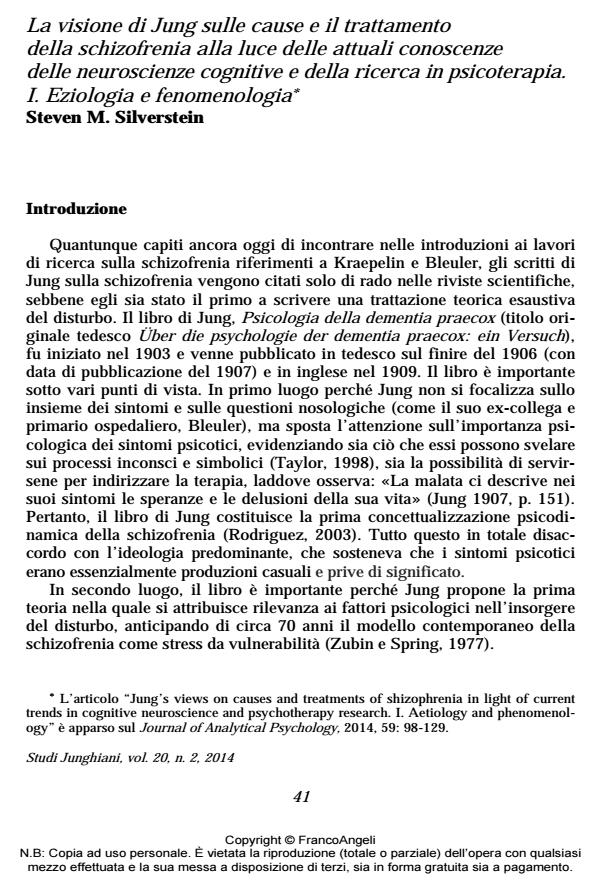Jung’s views on causes and treatments of shizophrenia in lightof current trends in cognitive neuroscience and psychotherapy research. I.Aetiology and phenomenology
Journal title STUDI JUNGHIANI
Author/s Steven M. Silverstein
Publishing Year 2015 Issue 2014/40
Language Italian Pages 35 P. 41-75 File size 262 KB
DOI 10.3280/JUN2014-040003
DOI is like a bar code for intellectual property: to have more infomation
click here
Below, you can see the article first page
If you want to buy this article in PDF format, you can do it, following the instructions to buy download credits

FrancoAngeli is member of Publishers International Linking Association, Inc (PILA), a not-for-profit association which run the CrossRef service enabling links to and from online scholarly content.
Jung’s writings on schizophrenia are almost completely ignored or forgotten today. Thepurpose of this paper, along with a follow-up article, is to review the primary themes foundin Jung’s writings on schizophrenia, and to assess the validity of his theories about the disorderin light of our current knowledge base in the fields of psychopathology, cognitive neuroscienceand psychotherapy research. In this article, five themes related to the aetiologyand phenomenology of schizophrenia from Jung's writings are discussed: 1) abaissement duniveau mental; 2) the complex; 3) mandala imagery; 4) constellation of archetypes and 5)psychological versus toxic aetiology. Reviews of the above areas suggest three conclusions.First, in many ways, Jung's ideas on schizophrenia anticipated much current thinking anddata about the disorder. Second, with the recent (re)convergence of psychological and biologicalapproaches to understanding and treating schizophrenia, the pioneering ideas of Jungregarding the importance of both factors and their interaction remain a useful and rich, butstill underutilized resource. Finally, a more concerted effort to understand and evaluate thevalidity of Jung’s concepts in terms of evidence from neuroscience could lead both to importantadvances in analytical psychology and to developments in therapeutic approachesthat would extend beyond the treatment of schizophrenia.
Keywords: Abaissement du niveau mental, aetiology, archetype, cognitive neuroscience,complex, dementia praecox, mandala perception, schizophrenia phenomenology
Steven M. Silverstein, La visione di Jung sulle cause e il trattamento della schizofrenia alla luce delle attuali conoscenze delle neuroscienze cognitive e della ricerca in psicoterapia. I. Eziologia e fenomenologia in "STUDI JUNGHIANI" 40/2014, pp 41-75, DOI: 10.3280/JUN2014-040003